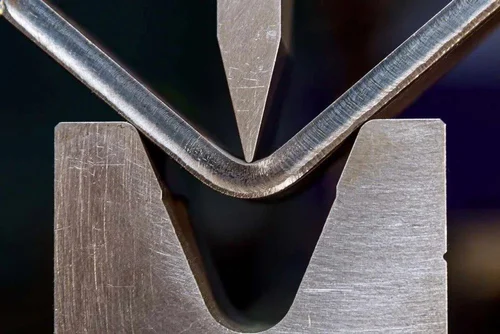When engineers whisper about the secrets behind sleek car doors, aircraft panels, and even your smartphone’s internal chassis, one phrase echoes through workshops worldwide: sheet metal bending. This unassuming process has quietly become the backbone of modern manufacturing, enabling everything from Mars rovers to minimalist furniture. Let’s pull back the curtain on this engineering marvel.
Why Every Innovator Should Care About Sheet Metal Bending
Imagine transforming a flat sheet of metal into a 3D masterpiece with the precision of origami and the strength of forged steel. That’s the magic of CNC sheet metal bending. Unlike traditional methods that require expensive molds or labor-intensive welding, bending delivers: – Lightning-fast production (parts ready in hours, not weeks) – Cost-effective prototyping (no $100k tooling investments) – Structural integrity (one continuous piece beats welded joints) But here’s the kicker: 75% of engineers underestimate its versatility. Let’s fix that.
The Two Titans of Bending: Brake Press vs. Rolling

1. Brake Press Bending: The Swiss Army Knife of Fabrication
Every workshop’s workhorse, the brake press, operates like a high-tech blacksmith. Two methods dominate:
– Air Bending
Think of this as the “freestyle” approach. A punch forces metal into a V-shaped die, leaving an air gap for flexibility.
– Pros: One tool creates multiple angles (90°? 120°? No problem)
– Cons: ±1° tolerance (not ideal for aerospace-grade parts)
– Bottom Bending
The perfectionist’s choice. Metal gets pressed fully into the die for mirror-like accuracy.
– Pros: Near-zero springback
– Cons: Requires custom dies (adds setup time)
Pro Tip: For most projects, air bending’s speed outweighs its minor tolerance gaps. Save bottom bending for mission-critical components.
2. Rolling: Where Flat Sheets Become Curved Masterpieces
Need a cylindrical fuel tank or an architectural dome? Rolling machines transform sheets into smooth curves through a ballet of three rotating cylinders.
– Key Insight: Always roll slightly tighter than needed—materials like stainless steel “spring back” up to 5% after bending.

The Golden Rules of Bending: What 90% of Designers Miss
Even geniuses stumble without these guidelines:
1. Bend Radius = Material Thickness × 1.5
Violate this, and your aluminum sheet cracks like a cookie. Example:
– 2mm steel → Minimum 3mm inner radius
2. Hole Placement: Keep 2.5× Thickness from Edges
Drill too close, and bending turns circular holes into teardrops.
3. The “K-Factor” Conundrum
This mystical number (usually 0.3–0.5) predicts how metal stretches during bending. Use it or face ±2mm surprises.
4. Material Roulette
– Aluminum 5052: The VIP for tight bends
– Stainless Steel 304: Corrosion-resistant but needs elbow grease
– Titanium: Handle with care (requires bend radii 5× thickness)
When Bending Beats Stamping, Laser Cutting, and Welding

| Process | Best For | Tolerance | Cost per 1k Units |
| CNC Bending | Medium-complexity geometries | ±0.18mm | $800 |
| Stamping | Mass-produced simple shapes | ±0.05mm | $200* |
| Laser Cutting | Intricate 2D profiles | ±0.10mm | $500 |
| Note: Stamping’s $200 cost excludes $10k+ mold fees. Bending wins for runs under 5,000 units. |
The Dirty Little Secrets of Sheet Metal
- “Springback” Isn’t a Myth
Even precision-bent steel “relaxes” post-bending. Compensate by overbending 1–2°. - Thickness ≠ Strength
A well-designed bent 1.5mm aluminum bracket often outperforms a bulky 3mm flat plate. - The 24/7 Factory Paradox
Automated CNC brakes can churn out parts while engineers sleep—but only if designs follow bending rules.

From Prototype to Profit: Real-World Wins
Case Study: Tesla’s Cybertruck Exoskeleton
By combining ultra-hard 30X cold-rolled steel with radical bending angles, Tesla achieved:
– 30% weight reduction vs. traditional truck frames
– 50% faster assembly (fewer welded joints) Your Turn: Whether you’re crafting medical devices or avant-garde furniture, bending turns “impossible” curves into profit margins.
The Future of Bending: AI Meets Hydraulics
Leading manufacturers now deploy:
– Machine Learning Press Brakes: Algorithms predict springback in real-time
– 3D-Printed Dies: Custom tools printed overnight for complex geometries
– IoT Rollers: Sensors auto-adjust pressure based on material batch variations.
Your Burning Questions—Answered

Q: Can I bend pre-painted sheets without chipping?
A: Yes—use urethane dies and limit bend angles to 90°.
Q: What’s the “UFO” material for high-strength bends?
A: 6061-T6 aluminum (requires annealing before bending).
Q: How thin is too thin?
A: 0.5mm is the practical minimum—anything thinner risks wrinkling.
In the hands of a savvy engineer, sheet metal bending isn’t just a process—it’s a superpower. From the smartphone in your pocket to the rocket engines propelling humanity to Mars, this century-old technique continues to shape our world, one precise bend at a time. The question isn’t whether to use bending, but how soon you’ll harness its full potential.



